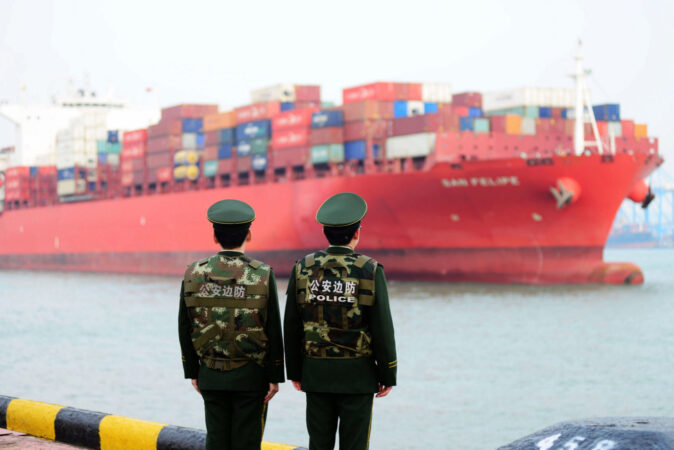When you count services, not just goods, trade flows with the US are far larger.
This week the media seized on a report by Eurostat, the European Union’s statistical agency, to declare that China surpassed the United States in 2020 to become the EU’s main trade partner. This is simply not true.
Eurostat’s report only addressed trade in goods. It shows that EU27 goods trade with China in 2020 totaled €586 billion, compared to €555 billion in EU27 with the U.S. That is a significant change from 2019, when EU27 trade with the U.S. was €617 billion, whereas EU27 goods trade with China was €561.2 billion.
Trade between countries, however, doesn’t just consist of trade in goods. It also includes trade in services, which the Eurostat report did not include. Services trade has been growing faster than goods trade. More European and American jobs depend on services than on goods, and the U.S. remains the EU’s top services trade partner.
While final numbers for trade in services are not yet available for the full year 2020, we do have data for the first three quarters of the year. Trade in services between the EU and the U.S. during that period was €296.3 billion — five times more than the trade in services between the EU and China, which totaled €53.3 billion.
If we annualize those figures to estimate the EU’s total trade in goods and services for 2020, we find that EU27-China trade in goods and services likely totaled €657 billion in 2020, while EU27-U.S. trade was €950 billion — 40 percent higher.
In short, if you look at overall trade flows and not just one kind of flow, it is clear that the EU’s largest trading partner is actually the U.S., as it has been for decades.
Two-lane highway vs. twelve-lane Autobahn
Just as trade is more than just flows of goods, international commerce is more than just trade. Reducing complex commercial ties to one metric — trade in goods — ignores the importance not only of services, but a host of additional economic ties that bind the EU and the U.S. in far deeper ways than those that bind either to China.
U.S. and European commercial ties with China are akin to a two-lane highway, whereas their commercial ties with each other are more like a twelve-lane Autobahn.
The highways to and from China are full of goods. They are busy, and they are crowded. Any type of accident on a two-lane highway can really snarl traffic — as we saw when supply chains were disrupted by the pandemic and by the U.S.-China tariff war.
Alongside the highway are narrow bike lanes for services. The EU and China have been busy trying to build a new lane on their highway — an investment path that they believe could unsnarl some of that traffic and add to their overall connections. Despite the EU-China Comprehensive Investment Agreement inked in December 2020, however, that investment lane remains a construction site, as opposition has arisen in some member states and in the European Parliament, which ultimately have to sign off on a final deal. Road construction on that deal is likely to continue through 2021.
The commercial highway connecting the EU with the U.S., in contrast, looks more like a twelve-lane Autobahn. Not only are there fewer speed limits and an even wider lane for goods, there are additional lanes for services, investment streams and sales of companies on each side of the Atlantic. The transatlantic digital lanes carry 75 percent of global digital content. The innovation lanes hosting research and development flows are the most intense between any two international partners. The jobs lanes provide employment for 16 million Europeans and Americans.
On each of these metrics, the ties that bind the EU to the U.S. are much thicker and far deeper than those that bind either to China. In the first three quarters of 2020, for example, U.S. companies invested $55 billion in Europe, seven times more than what Chinese firms invested in Europe. And despite the pandemic-induced recession, U.S. companies in 2020 earned $254 billion from their operations in Europe — 23 times what they earned from operations in China.
Despite the tremendous political and economic headwinds that have buffeted the transatlantic relationship in recent years, the U.S. and the EU remain each other’s most important trading partners and each other’s most significant commercial markets — bar none.
Daniel S. Hamilton directs the Global Europe Program at the Woodrow Wilson Center in Washington, D.C. He is the author, together with Joseph P. Quinlan, of “The Transatlantic Economy 2021”.
The original article can be found @Politico.eu






Leave a Reply